Vintage Montreal: Time Travelling With Resale and Recycling
“It’s Like Old Underwear to Her, but to Me, It’s a Thing of Beauty”
Vintage clothing is an escape—away from a fast-paced, performance-driven, and crazed way of life—to an era that only exists through artifacts left behind.
Vintage can act as a tangible connection to past generations and the lifestyles of previous owners.
Amanda Vandenberghe, avid vintage shopper since her youth, opened a vintage store five years ago. She called it Rudston-Brown Vintage, in honour of her grandmother’s maiden name.
Tucked into a small shop on Sherbrooke St. W. is a universe, home to a collection of garments from different homes, ages, professions, and cultures, spanning more than a century.
Walking back from the Salvation Army with bags full of clothes, Vandenberghe walked past a storefront for rent. “I just looked at my bag and I looked at the store like, ‘I should put vintage in that store,’” she said. What became Rudston-Brown used to be a fudge store. Within six weeks, the vintage store was open for business.
One of the gems Vandenberghe unearthed is a 1940s Hardy Amies off-white gown with sequin detailing.
Another one, which caught the eye of passersby through the glass window, was a floor-length coral bubblegum pink dress and matching coat, brocade with gold pineapples all over it. It belonged to the wife of the British Consul General in Montreal.
Each item is hand-picked. Few are pieces that Vandenberghe doesn’t expect to sell, but they are nonetheless a part of the store—and part of the thrill of hunting for an old and rare piece.
One of them is an 1860s or 1870s little boy’s kilt, made in Scotland, that she found at an antique auction. “It comes from an era that’s basically in our imagination, but it’s actually a concrete piece from that era,” she said.
The store filled up gradually; the once sparse racks are now packed with colourful bursts of year-round clothing.
“I just go with my instinct,” said Vandenberghe. “I select pieces. I guess it’s just my eye that attracts me to the piece and I can’t really say what it is.” The cut, origin, and era are secondary criteria to the quality and material of the garment.
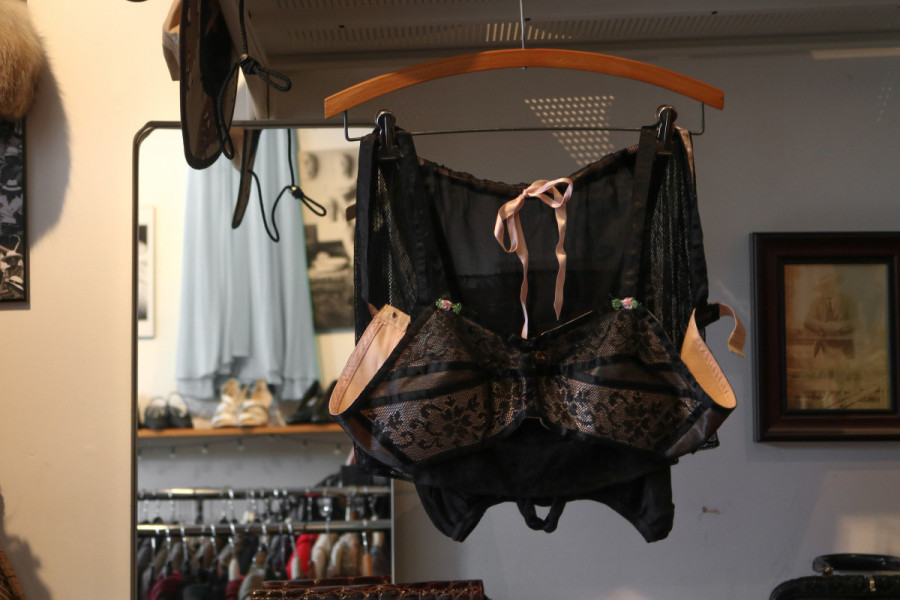
With only narrow paths left to circulate around the tables and aisles filling up the store, the walls were invisible, covered with pieces on display and lined with tightly packed racks.
Vandenberghe’s best quality finds are from estate sales, where the treasures of a lifetime lay in the closet. One of her favourite items in the store is a three-piece lingerie set from the 1920s, in impeccable condition.
“This bra is spectacular,” she said, explaining that the woman she bought it from didn’t accord it the same value. “It’s like old underwear to her, but to me, it’s a thing of beauty.”
She credits her knowledge of clothing and taste to her parents, “clothes horses” who were always surrounded with quality items. “They spent way too much on their clothing probably,” she said.
Rudston-Brown is carefully curated by Vandenberghe according to her rule that each item should be at least 25 years old. “[A] vintage store, to me, means that each piece is selected individually […] and that you try to maintain the principle of it being vintage,” she said.
Beyond Greenwashing
Fashion chains are also tapping into the vintage and resale market—usually curated or higher-end items—as they notice its importance and appeal for the customer on the environmental front.
Here are a couple of examples: H&M is set to trial sales of vintage and second-hand garments through its higher-end brand called & Other Stories. Selfridges, a high-end department store in the U.K., partnered with Vestiaire Collective to open a second-hand boutique.
Chief executives of major fashion companies consider sustainability—beyond greenwashing—as one of their top priorities going into 2020, according to a report from McKinsey & Company and The Business of Fashion, “The State of Fashion 2020: Navigating uncertainty.”
The second-hand industry—which includes resale and thrift—is on the rise, with Poshmark, TheRealReal, and thredUP as leading players, according to thredUP’s “2019 Resale Report.”
The report suggests the second-hand apparel market will double in five years, reaching $51 billion U.S. in 2023, up from $24 billion in 2018.
According to the McKinsey report, the textile sector accounts for six per cent of global greenhouse gas emissions, and materials used in the manufacturing process—washing, solvents, and dyes—account for one-fifth of industrial water pollution.
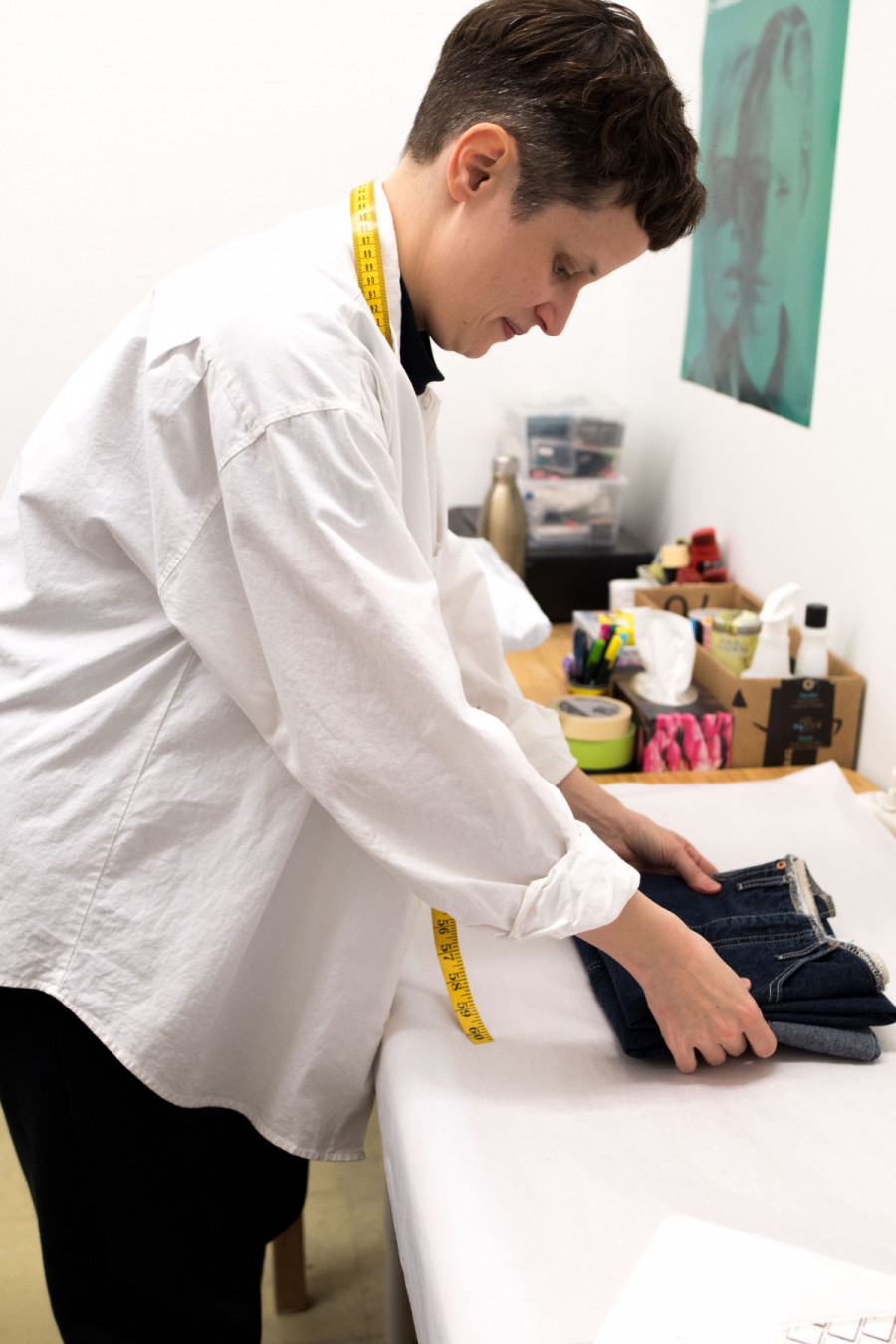
Aside from vintage being a sustainable alternative, it is a sure way not to come across an outfit twin when you’re out and about.
“There’s always a desire to find a piece that, when you’re going to wear it, you’re not going to run into other people on the street wearing the same thing,” said Catherine Lehouillier, co-founder and co-owner of Amie Amie, a Montreal-based online vintage store.
She has been thrifting since her early teenage years in the 90s.
“It comes from an era that’s basically in our imagination, but it’s actually a concrete piece from that era.”
— Amanda Vandenberghe
Montreal and the thrift scene
“[There’s] a lot of colour in Montreal,” Lehouillier said. “I guess there’s a lot of freedom; people feel like they have room to explore whatever style they’re working on.”
Lehouillier and her business partner, Emily Luciani, opened Amie Amie in March 2018.
Over the past five years, and even more so in the past two years, Lehouillier has noticed the emergence of sustainable brands in Montreal like Odeyalo, Nil Apparel, Meemoza, and Dailystory, all of which specialize Canadian-made quality garments.
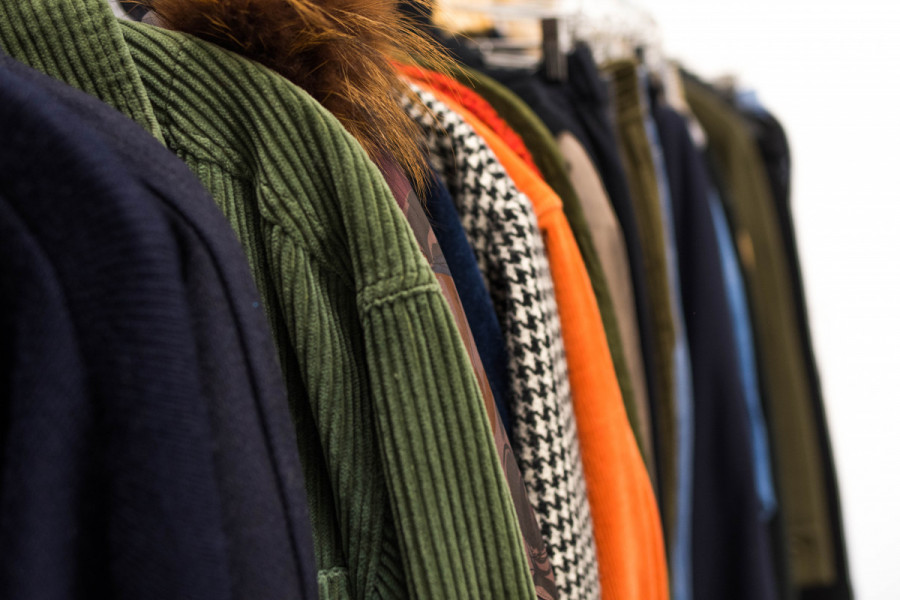
To stock Amie Amie, Lehouillier is always on the hunt for durable materials and a high content of natural fibres.
“Usually, I’m looking for minimalist, simple, classic pieces that you could have worn five years ago, and it’s still going to be fine if you wear it in 20 years,” she said.
Sarah Power—a regular at thrift stores—remembers shopping second-hand with her parents when she was just a child. She said it’s become less of a taboo over the years, and now everyone does it.
“I find things that are nicer than I would find in stores. It’s more original, it’s more my style. Every time I go to regular stores, I can never find anything I’m looking for. I just settle,” she said.
Thrift shopping comes with more excitement.
“I’ll always find things that I’m shocked [were] designed before,” she said.
Is there a risk of running out of vintage?
Although vintage shopping has been around for decades, a growing environmental awareness among consumers and the fading stigma around second-hand shopping have fuelled a resurgence.
However, as we progress through the decades and the era considered vintage extends, pieces from the 80s and 90s will become harder to find, said Lehouillier.Soon, the generation of clothing defined by fast fashion will become vintage.
“Now it’s early 90s [that] is vintage, so it’s going to become early 2000s and then we’re going to really have to watch out for the quality,” said Vandenberghe.
However, neither of the store owners feel that they will face this issue in the immediate future.Depletion is still far away because people who buy vintage usually have a tendency to recycle often and swap out their closet for new finds.
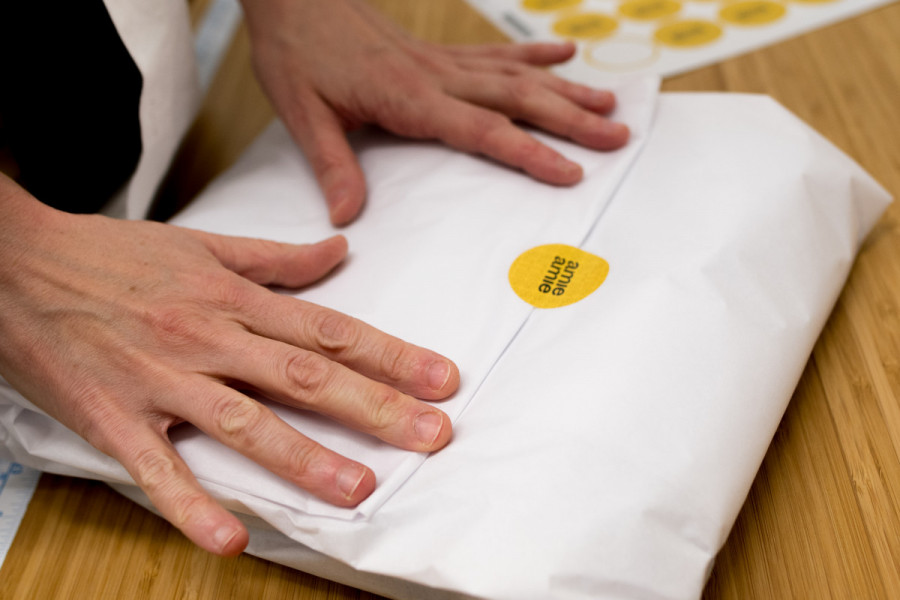
As someone with an eclectic style turned minimalist, Lehouillier said that if she doesn’t wear an article of clothing for as little as a few weeks, it might go on to find a new home.
Also, there are still very large quantities of vintage clothing, if not in Montreal, then in the United States. “I think there is enough [vintage] because we don’t need that much,” said Vandenberghe.
Large scale stores and small shops combined, there are ample amounts of clothing that buyers are no longer wearing.
“The sheer volume of used clothing that’s available for us to recycle […] is just so insane that I’m not really feeling like the end of something is coming. But it is changing for sure,” said Lehouillier.
However, the future of vintage still lingers in her thoughts. “I spend my whole life wondering if, in a few years, is it going to become impossible to find anything that’s 20 years old or more?” she said.
Running a store
Another challenge for a vintage store is the inability to predict what will sell and when customer purchasing habits at vintage stores are not comparable to those at retail outlets, which sell new goods according to the seasonal fashion cycle.
“Sometimes I give up on a piece. I don’t pick things perfectly and sometimes I probably was not in my right mind when I picked the piece,” said Vandenberghe.
It is even less predictable for online stores since customers shop from all corners of the world. “Actually, our second year so far has not replicated our first year at all, it’s been quite the surprise,” said Lehouillier. Since the items are usually one of a kind, the purchasing method for the store owners is different too: You buy it when you see it.

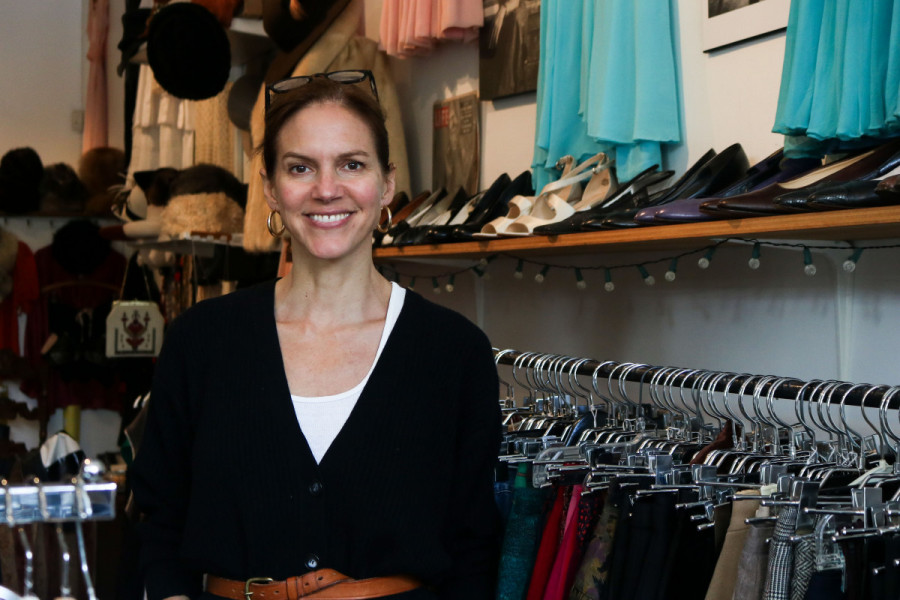
_600_832_s.png)




